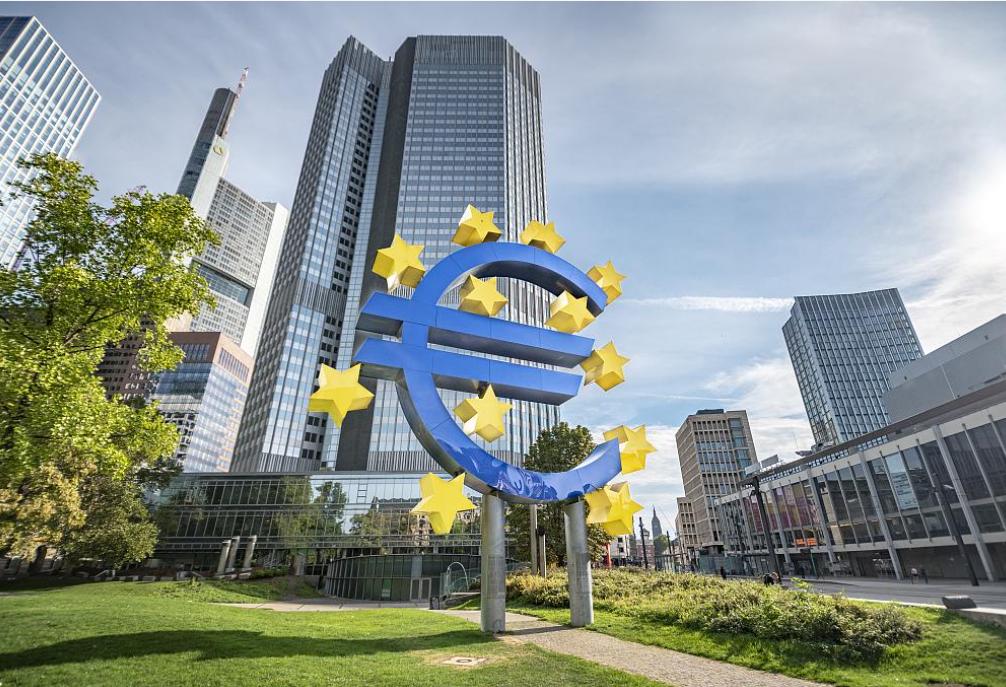
On October 17, the Governing Council of the European Central Bank decided to cut all three key interest rates by 25 basis points at its monetary policy meeting in Ljubljana, Slovenia. Among them, the deposit mechanism interest rate will be reduced to 3.25%, the main refinancing rate will be reduced to 3.40%, and the marginal lending rate will be reduced to 3.65%, and the above interest rate policies will take effect on October 23. It is the third time this year that the ECB has cut interest rates, marking a shift in the focus of the euro zone's central bank from reducing inflation to protecting economic growth, which has lagged far behind the United States for two years in a row and the risk of recession is increasing. The main purpose of the successive rate cuts is to further stimulate economic growth in Europe.
The European Central Bank announced a 25 basis point interest rate cut, and this monetary policy adjustment has a multi-faceted impact on the European economy. The first is the positive impact, interest rate cuts help reduce the borrowing costs of enterprises and individuals, and thus stimulate investment and consumption. Against the backdrop of slowing growth in the eurozone, the measure is seen as an important means to boost the economy. Demand within the eurozone is expected to strengthen, boosting growth. The rate cut will reduce the financial burden of enterprises, especially for those enterprises that are highly dependent on bank loans, which will directly improve their profitability. Companies may use the saved interest payments to expand production, research and innovation, or improve employee welfare, thereby further boosting economic growth. Cutting interest rates helps stimulate economic activity, which in turn creates more jobs. This is important for reducing unemployment in the eurozone and raising household income levels. With the improvement of the job market, residents' spending power will also be improved, thus forming a virtuous circle of economic growth. A rate cut could lead to a fall in the value of the euro, which makes eurozone exports more price-competitive on international markets. An increase in exports would help eurozone companies gain market share, boost profitability and boost economic growth.
The second is the potential risk, interest rate cuts may lead to stronger economic activity, and then push up the price level. If demand in the euro area grows too much, it will also cause demand to outstrip supply, leading to a rebound in inflationary pressures. A rate cut could change market expectations of future inflation. If the market believes that a rate cut will lead to higher inflation, then this could trigger a round of rising inflation expectations, which could push prices even higher. Interest rate cuts may cause asset prices (such as stocks, bonds, etc.) in financial markets to rise, thus forming asset price bubbles. If the bubble bursts, it could have a major impact on financial markets. At the same time, a rate cut could lead to the depreciation of the euro exchange rate, which, while helping to improve the competitiveness of eurozone exports, could also cause volatility in currency markets. Large fluctuations in exchange rates could have adverse effects on the balance of payments and financial market stability in the euro area. While interest rate cuts can reduce the cost of debt financing, they can also lead some countries to borrow too much, thereby increasing their debt burdens. Especially for those countries that are already facing serious debt problems, rate cuts could further exacerbate their debt crises. The move to cut interest rates may reduce the cost of financing debt, but it does not necessarily solve debt sustainability issues. If countries in the euro area are unable to effectively control their debt levels, interest rate cuts may bring short-term benefits, but in the long run they may exacerbate debt risks. Geopolitical risks could have a significant impact on the eurozone economy, particularly in terms of energy supplies, trade relations and more. If geopolitical tensions escalate, it could undermine the stimulative effect of rate cuts on economic growth and even negatively impact the eurozone economy.
To sum up, the ECB's announcement of a 25 basis point interest rate cut, while aimed at stimulating economic growth and boosting liquidity, also brings some potential risks. Therefore, when formulating monetary policy, the European Central Bank needs to comprehensively consider various factors, cooperate with other policy makers, and take corresponding measures to deal with these potential risks, so as to jointly promote the stable growth of the eurozone economy.

The South Korean political arena has once again been embroiled in a public controversy over a judicial investigation that has shaken the entire nation.
The South Korean political arena has once again been embroi…
On the morning of December 29th local time, the precious me…
According to the US media Barchart, recently, the fluctuati…
On December 29th, Mar-a-Lago in Florida, USA, witnessed a h…
SoftBank Group announced on Monday that it has agreed to ac…
Recently, the US State Department issued a visa ban, adding…